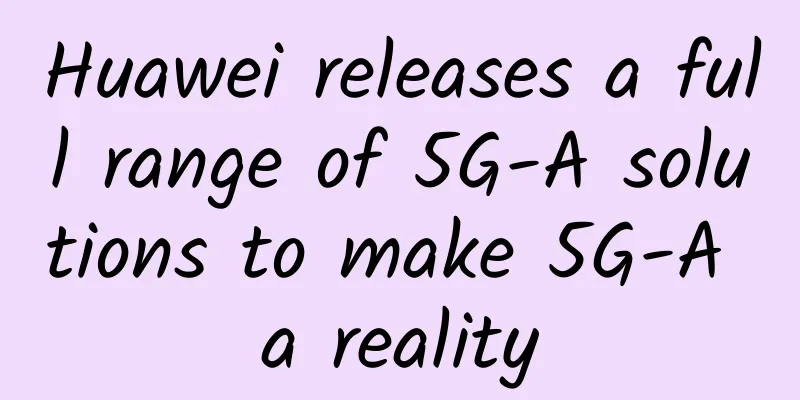MWC 2018: Top 10 5G Releases

|
Last week's 2018 Mobile World Congress (MWC) featured dozens of 5G-related announcements, including devices, modems, radios, plans, spectrum and trials. We've rounded up the most important 5G announcements from MWC Barcelona, along with what we've heard from operators, vendors and network companies. Intel is working on 5G phones and PCS Intel has partnered with Dell, HP, Lenovo, and Microsoft to bring 5G connectivity to Windows PCs using the Intel XMM 8000 series of commercial 5G modems. At MWC, Intel demonstrated its first two-in-one concept PC that supports 5G technology. This PC uses an 8th-generation Core i5 processor and an early 5G modem. It is expected that Intel will bring 5G-connected PCs to market in the second half of 2019. Intel also announced a "multi-year collaboration" with Spreadtrum to produce a 5G mobile phone platform by the second half of 2019 using Intel's XMM 8000 series modems and Spreadtrum's application processors. "We're very excited about this progress, and it's a great opportunity to bring the XMM 8000 series into the personal computers that I mentioned earlier, but also into mobile devices and smartphones," Rob Topol, Intel's senior technical lead for 5G, told the media. “We will demonstrate the first chipset that supports the 5G 2-in-1 concept at our booth.”
Huawei releases its first 5G customer premises equipment (CPE) Huawei has launched its first commercial 5G CPE, a terminal device that supports 3GPP 5G standards and uses the Balong 5G01 chipset developed by Huawei, becoming an integral part of Huawei's end-to-end 5G solution. According to Huawei, this is the world's first commercial 3GPP 5G chipset that supports download speeds of up to 2.3Gbps in the sub-6GHz millimeter wave (mmWave) frequency band. “The Balong 5G01 makes Huawei the first company to offer an end-to-end 5G solution through its network, device, and chip-level capabilities,” Huawei said, saying the CPE comes in both sub-6GHz mode and mmWave mode, as well as indoor and outdoor units. "Huawei's low-frequency 5G CPE is small and lightweight, compatible with 4G and 5G networks, and has a tested download speed of up to 2Gbps, which is 20 times that of 100Mbps optical fiber. It provides an ultra-fast experience, allowing users to enjoy VR videos and games, or download a TV show in one second." Huawei claims to be the only company to launch a complete 5G end-to-end solution and mentioned its overall 5G product portfolio for 2018: Massive MIMO, including AAU5612, AAU5310i and HAAU5213; Massive MIMO Polar Site, including HAAU5112 and EasyBlink; Small Base Station, including 5G Lampsite products; Equipment, including 5G CPE; Baseband, including BBU5900 and CBU5900; Transport, including microwave, IPRAN, FO OTN and WDM products; Core, consisting of its cloud-based products. ZTE plans to launch 5G smartphone by the end of this year Like Huawei, ZTE's 5G CPE is already under development, and ZTE says it will launch 5G smartphones and tablets in late 2018 or early 2019. ZTE further stated that it will deploy network products on commercial 5G networks in the first half of next year, and the Chinese telecommunications technology provider also stated that it is "ready to help operators deploy 5G." ZTE said: "As it is ready for commercialization, ZTE's 5G solutions will be launched soon. As a pioneer in the 5G era, ZTE has made the launch of 5G solutions its core goal." In addition to the 1.2Gbps-capable smartphone announced this week, ZTE is also helping partners validate the technology through what it calls "the most commercially viable 5G field test network currently available." Telstra to launch 5G in 2019 Australian operator Telstra has finally announced its 5G launch plans, aiming to offer 5G to major cities and regions by the end of 2019 using both sub-6GHz and mmWave spectrum. According to Telstra's 5G roadmap, more than 1,000 small areas will be deployed in metropolitan areas in 2018 to increase capacity, and 4G and 5G integration trials, including interoperability testing, will be conducted with Ericsson, Intel and Qualcomm. "Our ambition is to lead the way in 5G and be the leader in rolling out 5G in Australia, but it's not just about being first, it's about making sure you have a fully integrated, broad 5G portfolio," Telstra CEO Andy Penn said at MWC. "We have been a leader in technology and we will continue to be so, as I said, in addition to planting the flag, but more importantly, we have a full suite of 5G solutions for our customers and we will continue to invest and grow 4G as well." "Because ultimately, 5G may be commercially available in 2019, but not everyone will actually suddenly switch to 5G, and there will still be a lot of customers on 4G." Sprint announces first six cities to adopt 5G Sprint announced at this year's MWC conference that it will first bring 5G networks to six cities in the United States: Los Angeles, Washington DC, Atlanta, Chicago, Dallas and Houston. These cities will begin to experience "5G-like capabilities" from April. The upgrade will begin with the deployment of Massive MIMO in Los Angeles, Chicago and Dallas, and will expand to other markets later this year. Sprint will deploy thousands of Massive MIMO radios from Ericsson, Nokia and Samsung, as well as 40,000 outdoor small cell solutions, 15,000 stand-up small cells and 1 million Sprint Magic Boxes (billed as the world's first wireless small cell) to cell towers. “The race to 5G is heating up, and let me be clear: today’s announcement is a major step forward for Sprint to be first to deliver a 5G mobile network,” said Sprint CEO Marcelo Claure. “Our deep spectrum position gives us an advantage over other U.S. operators, and we are making significant investments in state-of-the-art technology and working with leading chipset and handset partners to deliver an incredible next-generation network to our customers.” Ericsson CEO says 5G will bring tens of billions of dollars in revenue Ericsson CEO Børje Ekholm has unveiled the Swedish networking giant’s guidance on how telecom operators can maximise revenue during the transition to 5G, predicting that the revenue potential from real-time automation will reach $101 billion by 2026. Enhanced video services came in second with potential revenue of $96 billion, according to Ericsson, though Ekholm believes enhanced mobile broadband will be among the first commercial deployments of 5G. Speaking about net neutrality, Ekholm said that while Ericsson supports non-discriminatory access to information and data, he added that "not all traffic is equal" - and once critical applications (such as remote surgery) are carried out over 5G, then they should be prioritized over other traffic. He also said governments should promote the implementation of 5G by making new spectrum available and providing a "stable regulatory environment" and a faster licensing process. NTT DoCoMo and Intel partner to provide 5G for the 2020 Tokyo Olympics Intel has announced that it will work with Japanese telecom operator NTT DoCoMo to provide 5G coverage and technology for the 2020 Tokyo Olympics. Some of the applications Intel predicts for the 2020 Tokyo Olympics include 360-degree 8K video streaming and live broadcasting, including VR applications; drones equipped with high-definition cameras; smart city sensors and connected cars, which will enable better transportation options throughout Tokyo; and better access to data and analytics during athletes' Olympic training. “As we look ahead to 2020, Intel is excited to announce today its collaboration with NTT DoCoMo, National Partner of the Tokyo 2020 Olympic Games, to provide 5G technology for the next Olympic Games. Intel hopes to build what is expected to be the largest commercial 5G network in the world,” said Aicha Evans, Intel senior vice president and chief strategy officer. Intel said the 2020 Tokyo Olympics will also be a preview of technology prototypes for 2022-23. AT&T says its 5G leadership stems from focus on virtualization and edge computing AT&T is the clear leader in the race, with its promise to launch 5G networks in 12 markets by the end of the year. Elgal, senior vice president of wireless network architecture and design at AT&T, said that’s partly due to AT&T’s focus on edge computing and network virtualization. “We have a unique advantage because of our experience in SDN, the work we’ve done in 5G and edge,” he said at MWC. “We are very active in every one of those three dimensions; we believe that what is unique is not just the opportunity, but how we think about the network and how we deploy it.” Elbaz also noted that AT&T's acquisition of FiberTower earlier this month "gets us to where we need to be" to advance the development of millimeter wave spectrum. He added that the focus is not only on participating and driving 5G standards forward, but also testing the technology to put it in a prime position for deployment. “That’s why we think we can be number one because we are very active in standards, in addition to the fact that we did a lot of trials in ’16 and ’17, we are very active in standards and we believe it is the right thing to do and in fact we have accelerated it,” he said. AT&T has not yet announced which manufacturer it is working with, nor has it said which other cities will have 5G by the end of the year. Elbaz said more information will be released next month. Huawei and Intel demonstrate 5G interoperability Huawei and Intel made the world's first public demonstration of 5G New Radio (5G NR) over-the-air interoperability using the new 3GPP 5G NR non-standalone (NSA) standard at this year's MWC. "This will be a fully compliant connection, which is important because the standard was just voted on in December and obviously it took that long to be able to develop a solution that supports it and is fully compliant," Rob Topol, general manager of 5G Advanced Technologies at Intel, told the media. As early as September, Huawei announced that it would cooperate with Intel on interoperability testing based on 3GPP standards. Samsung's 5G fixed wireless package gets FCC certification Samsung announced at MWC that its complete commercial Fixed Wireless Access (FWA) 5G solution has become the world’s first to receive approval from the U.S. Federal Communications Commission (FCC). Operating in the millimeter wave band, this end-to-end 5G FWA solution includes commercial indoor and outdoor 5G home routers and CPE; 5G radio access network (RAN), involving radio access unit and virtualized RAN (vRAN); next-generation core; and AI-driven 3D radio frequency planning services and tools. The devices and solutions were approved by the FCC last week, which Samsung said was thanks to "close collaboration with the FCC's Office of Engineering and Technology." “Since the start of 5G research in 2012, Samsung has been among industry players that believe in the potential of millimeter wave spectrum,” said Youngky Kim, president of Samsung Electronics and head of its networks business. “Our efforts to advance this technology will see the light of day this year, making 5G a reality and opening up new horizons for consumers, operators and enterprises.” |
>>: Detailed explanation of the three most commonly used wiring systems in integrated wiring!
Recommend
Will the popular SD-WAN really kill MPLS?
[[419147]] Arguably, no network technology has re...
Three methods to tell you how to set IP for a project with more than 255 cameras? Why do IP addresses usually start with 192.168?
We work in weak current, and we have the most con...
Can we rely on HTTPS to keep us safe?
HTTPS is the guardian of web connections Most URL...
TmhHost Spring 30% off: Los Angeles, USA/Los Angeles High Defense/Hong Kong CN2+BGP monthly payment starts from 24 yuan
TmhHost is carrying out a spring back-to-school p...
When 5G meets new infrastructure, how will edge computing develop?
Edge computing has become one of the hottest tech...
Understand the HTTP request process in one article. If you don't believe it, you still don't know it
Prerequisites OSI architecture TCP/IP related pro...
Satellite Internet: The war is already raging
[[323965]] On April 20, satellite Internet was cl...
16 Useful Bandwidth Monitoring Tools to Analyze Network Usage in Linux
Why are today's networks so slow? Are you hav...
HostDare 60% off, Los Angeles VPS from $10 per year, Asia optimized line VPS from $17 per year
HostDare recently offered a 40% discount code for...
Chinese giants retreat overseas
A withdrawal movement from Chinese giants is unde...
Wi-Fi Alliance: Wi-Fi 6E is the most significant upgrade in 20 years
With the rapid development of mobile devices, the...
The road ahead is long and arduous. When will 5G packages become available to ordinary people?
"I won't buy any non-5G mobile phones&qu...
5G+edge computing is in the first stage
On March 3, 2020, GSMA released the report "...
5G wireless network signaling process
1. 5G initial access 1. Overview of powering on a...
Review of 2021丨Highlights of the three major operators
2021 is the first year of implementation of my co...









